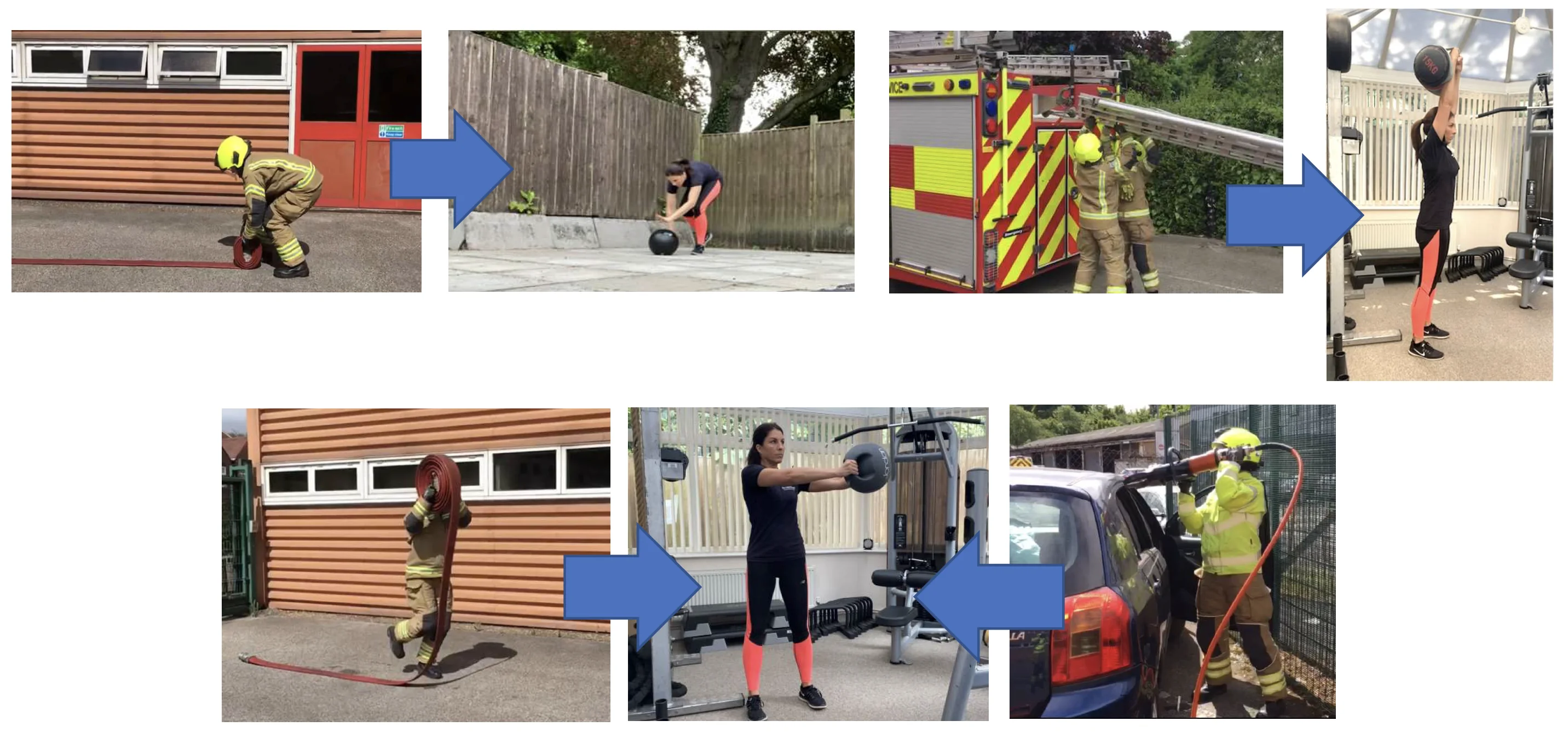Get firefit specific
Firefighters are required to have a good all-around level of fitness. The below demonstrates the various fitness components that are essential physical attributes required, with a justification as to why they are important.
Cardio training
- The tasks that a firefighter undertakes whilst wearing PPE are demanding, and require a good level of cardiovascular fitness.
- All Nottinghamshire Fire and Rescue operational firefighters are required to undertake an annual fitness test to the national standard VO2 of 42.3 ml/kg/min. This is the equivalent of 8.8 on the MSFT.
- However, this should be the minimum level of fitness that a firefighter should maintain, so they are not working to maximum capacity.
Resistance training
- Lifting and carrying heavy equipment demands a level of physical strength, so tasks can be completed comfortably, with the stamina to continue.
- These include handling ladders, hose running, carrying equipment and using the cutting equipment.
Balance, agility proprioception
- Working in dark conditions with debris underfoot is not uncommon for a firefighter.
- The body’s ability to react quickly to a slip or trip depends on the neurological pathway from our joint to our brain to initiate a reaction.
Flexibility
- Firefighters need to be able to manoeuvre their body through challenging or tight confined space, requiring a good level of flexibility.
- A lack of flexibility will limit the range of motion, placing stress on joints, which can then potentially result in injury such as muscle strains or ligament damage.

Needs analysis
Identify any Gaps
Throughout your training, you can establish and monitor your own training status in relation to the demands of the role outlined. From this, you are encouraged to complete a Needs Analysis based on the recommended physical attributes and ability. The Needs Analysis encourages you to explore your training history, what has your training previously involved, how often, what modes, what you like, dislike, barriers, injuries or weaknesses. It may be that you stick to following a specific training regime that you most enjoy, such as predominately cardio or weights, which is common. However, this can come at a risk of neglecting other essential components that are essential for a firefighter to possess.
Taking some time to think about your training history will also help you to establish your current baseline whilst identifying any gaps in your training. You can then ensure these are factored into your programme, helping you to achieve your goals.
Set Your Goals
Planning what you are aiming to achieve will help you to ensure you get the best out of your training sessions.
Setting SMART: Specific Measurable Achievable Realistic Timebound goals and following a specific programme will help you to stay on track and monitor your progression.
History
↓
Need
↓
Identify
↓
Firefighter fitness training
History - Establish your baseline
Complete your Needs Analysis on blank paper, like a mind map, to note down your training history.
Think about:
- Your training history; both long-term and short term
- Frequency, intensity, duration and type
- Have you had a focus i.e. sport or event specific
- What motivates you and what do you enjoy
- Barriers or dislikes
- Any previous injuries/weaknesses
Need
Based on the specific tasks required for the role of a firefighter. For example; hose running, ladder lift, equipment carry, rescue and working in dark confined spaces
- Cardiovascular Endurance
- Muscular Endurance
- Muscular Strength
- Coordination and Balance
- Flexibility
- Speed, power, agility
- Reaction time
Identify
This task will help you to identify any gaps in your training, so you can ensure you include these components in your programme.